KPIs, or key performance indicators, are a way for companies to track their progress toward a specified goal. As a retailer, recognizing retail trends and the most important KPIs to measure, allows eCommerce professionals to improve current strategies and helps focus on the factors that impact their chances of reaching their intended results.
Retail KPIs often include factors like conversion rate, consumer retention, and other metrics that show that a retailer is on its way to increase revenue. Here’s a look at common retail KPIs examples, retail KPIs to monitor, and retail KPI formulas to showcase the importance of monitoring KPIs and the opportunities that can be offered to a retailer by doing so.
Table of Contents
- > What are retail KPIs
- > Typical examples of retail KPIs
- > How retail KPIs can help the growth of a retail venture
- > The most critical types of retail KPIs
- > Type #1: Retail KPIs for accurate sales data
- > Type #2: Retail KPIs to Evaluate Customer Habits
- > Type #3: Merchandising Retail KPIs
- > Type #4: Financial Retail KPIs
- > How to improve KPI performance in retail
- > Tools for KPIs reporting
- > Focus on the Retail KPIs that serve your business strategy and vision
What are retail KPIs?
The KPI meaning in retail is a quantifiable measure that can tell a retailer how their business is performing. It’s important to note that different retail KPIs to monitor can track various goals. For most retailers, the primary goal to be reached is increasing YoY revenue. However, retailers can also track other areas of their business, such as average transaction value, COGS, sales per employee, and online vs in-store sales.
Overall, retailers can benefit from figuring out what retail KPIs to monitor, as it provides them with information to help recognize weaknesses in a business strategy, areas of opportunity, and areas of strength.
Typical examples of retail KPIs
Some of the most common retail KPIs to monitor are:
- Conversion rate
- Customer retention
- Foot traffic vs. digital traffic
Conversion rate is of utmost importance, as conversions add to the YoY revenue of a retailer. Since customer retention is key to growing as a retailer, it is important to monitor how your consumers are responding to your business.
Retailers that utilize an omnichannel marketing style often prioritize the foot traffic vs. digital traffic KPI, as it tells retailers where they are performing best. This allows them to fill in the gaps or focus on the store presence that has the greatest performance measurements.
These are only a few of the retail KPIs to monitor as a retailer. This article will take a deep dive into the many retail KPIs, what they mean, how to measure them, and their importance to any retailer’s success.
How retail KPIs can help the growth of a retail venture
Retail KPIs offer an extensive amount of useful information that can be used to continuously grow a business, making it essential for anyone operating a business to utilize. When analyzing some of the most famous retailers in the market and asking what they did to achieve their great success, those businesses point out how they optimized their KPIs and began to see immense growth.
For example, Sephora, a well-known retailer in the makeup industry, collected and utilized consumer data to drive sales. Sephora uses an omnichannel approach, having a presence on multiple networks.
Since consumers complete transactions across multiple channels, it is vital to collect data to find the best approach for targeting them at each level. With their revelations on consumer engagement, they have been able to build targeted loyalty programs, connect their digital and in-store presence, and take part in creating innovations that solve consumer problems and drive future sales.

The most critical types of retail KPIs
There are four primary types of retail KPIs to monitor, with each serving a different purpose:
- Evaluation of Sales Data. Sales KPIs measure the effectiveness of the current sales strategies in place. Their end goal is to improve the processes to increase sales.
- Evaluation of Customer Habits. Customer engagement KPIs are used to analyze and improve the customer experience to drive sales.
- Merchandising. Merchandising KPIs indicate how the merchandise being offered to consumers is either helping or hurting the goal of increased revenue.
- Financial. Financial teams utilize financial KPIs to keep track of progress toward a retailer’s goal.
Type #1: Retail KPIs for accurate sales data
Sales KPIs help provide sales teams and managers with the data they need to continue or alter their path to reaching the retailer’s goals. Like other retail KPIs to monitor, sales KPIs can also be used to identify new trends entering the market that may affect the strategy that is currently put into place.
KPI #1: Sales per Square Foot

Definition: Sales per square foot is a sales metric used by retailers to give insight into the revenue generated per square foot of a store.
Why you should track it: Sales per square foot is an important and useful store KPI to track because it measures the efficiency of a company and how well it uses its assets to achieve success. This can be used to compare to competitors and find areas of opportunity for growth.
Formula: Sales per Square Foot = Revenues / Retail Space
KPI#2: Year-Over-Year Sales
Definition: Year-over-year (YoY) sales are when a retailer compares sales of a specific period to the same period of the previous year.
Why you should track it: Monitoring YoY sales allows a retailer to have access to the financial data over an entire year and compare it to previous years. It determines the rate of growth or pinpoints the period that led to a decline in sales. This information helps retailers determine what strategies are working and which ones need an alteration to be more effective.
Formula: Year-over-Year Growth (YoY) = (Current Period Value / Prior Period Value) – 1

KPI #3: Average Transaction Value
Definition: The average transaction value, or ATV, is a measurement of the amount spent by a consumer per visit.
Why you should track it: Tracking the ATV allows a retailer to analyze the amount of revenue from each consumer. When the ATV is high, it means that customer engagement is high. Tracking this KPI will ensure that retailers are reaching high levels of customer engagement and increasing revenue.
Formula: Average Transaction Value = Sales/Transactions

KPI #4: Sales per Employee
Definition: Sales per employee is a metric found by dividing a retailer’s annual sales by the number of employees to find the financial productivity of each employee.
Why you should track it: This retail KPI to monitor is important for any business that invests in employees and relies on them to help reach revenue goals. Since most companies’ greatest expense is employee salaries and benefits, it is vital to ensure that employees are productive in increasing revenue.
Formula: Sales per Employee = Annual Sales / Number of Employees
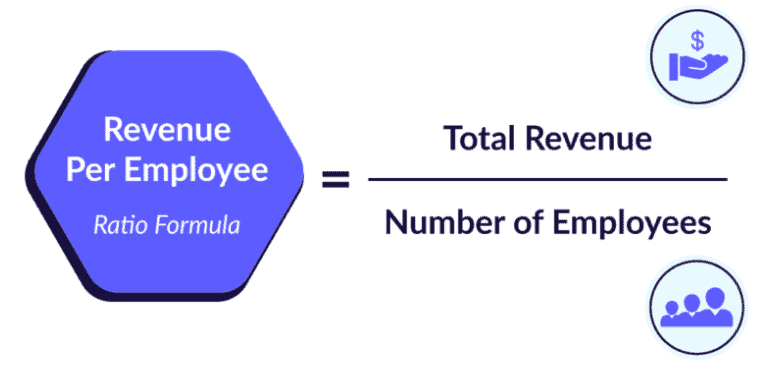
KPI #5: Cost of Goods Sold (COGS)
Definition: Cost of goods sold relates to all of the expenses needed for the production of the goods offered by a retailer, including indirect costs like distribution.
Why you should track it: COGS can directly relate to the net income, either lowering it or raising it. If the cost of goods sold is high, it tells retailers that they need to cut or adjust costs of goods production to positively affect their net income.
Formula: Cost of Goods Sold = Beginning Inventory + Purchases – Closing Inventory
KPI #6: Online vs. In-store Sales
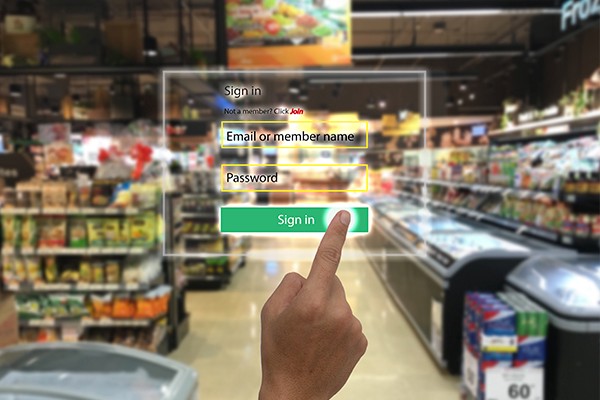
Definition: Online and in-store sales can be found by simply tracking the revenue from each channel. These numbers are then compared against each other to see the productivity of both.
Why you should track it: Retail statistics show that 78% of consumers prefer an omnichannel experience, so it’s important for retailers to implement an omnichannel marketing strategy. Tracking online and in-store performance allows a retailer to show where their success is primarily coming from, while also revealing areas of opportunity to improve their omnichannel strategy.
KPI #7: Shrinkage

Definition: The shrinkage KPI measures the rate of inventory reduction due to occurrences like theft, loss, or faulty record keeping.
Why you should track it: Tracking shrinkage allows retailers to identify the root cause of inventory reduction and implement preventative measures to lower the chances of shrinkage in the future.
Formula: Inventory Shrinkage formula = Inventory in Book of Accounts – Inventory in Physical Existence
KPI #8: Sell Through
Definition: Sell through rate is a metric used to measure the rate at which products are sold during a specific period compared to the number of products received from the manufacturer during that same time frame.
Why you should track it: Before a product is sold, it is costing the retailer money. Measuring a sell through rate ensures that products are sold quickly and efficiently, while also telling the retailer when a product is not doing well. It allows a retailer to focus on more popular products and allows them to make changes to products that have a lower sell through rate.
Formula: Sell through rate = Number of units sold / Number of units received x 100

KPI #9: Gross Margin Return on Investment (GMROI)
Definition: GMROI is one of the most common inventory KPIs for retail, showing retailers their ability to turn inventory into profit.
Why you should track it: Tracking and understanding a GMROI can ensure that a retailer has a good balance of sales, margin, and cost of inventory. This ensures that a retailer is truly profiting, rather than breaking even or going negative.
Formula: GMROI = Gross Profit / Average Inventory Cost
Type #2: Retail KPIs to Evaluate Customer Habits
KPIs that give insight to customer habits are arguably some of the most important retail KPIs to track, as customers are the basis of a company’s success.
In fact, 85% of marketing executives identify customer engagement metrics as one of the most important when creating their marketing strategy for 2022. Utilizing customer engagement platforms and other analytical tools to collect data on consumer habits will allow retailers to adjust their strategy to meet the need of the consumer and increase sales.
KPI #1: Customer Retention Rate
Definition: Customer retention rate tracks the percentage of customers that will return to make a repeat purchase.
Why you should track it: This retail KPI to monitor tells retailers how their customer loyalty is doing and can indicate whether more needs to be done to keep consumers coming back.
Formula: Customer Retention Rate = (Ending Customer – New Customer) / Beginning Customers

KPI #2: Customer Satisfaction

Definition: Customer satisfaction can be measured using a customer satisfaction score and is used as a way for consumers to communicate their experience shopping with a retailer.
Why you should track it: Measuring customer satisfaction is a great way to understand customer experience in multiple areas. Customers can indicate their satisfaction with a product, experience, or service, which can help retailers know what areas to focus on improving or maintaining.
Formula: Customer Satisfaction Score = Number of satisfied customer / Total Responses x 100
KPI #3: Traffic

Definition: Traffic is identified as the total number of consumers that visit a retailer, whether that be online or in-store.
Why you should track it: Traffic is a useful metric to measure due to its versatility and comparability. As seen in the above diagram, companies can use these metrics to compare traffic for specific deals/holidays or to compare traffic to competitors. This tells retailers to determine the scope of their reach.
KPI #4: Units per Transaction
Definition: Units per transaction (UPT) measures the average amount of products consumers purchase at one transaction.
Why you should track it: When customers are purchasing more products, it means that retailers are increasing their revenue. This metric also tells retailers that they understand their consumers by offering products that are of value to them and placing them in a manner that makes them accessible throughout a customer’s shopping journey.
Formula: UPT = Number of Units Sold / Number of Transactions
Type #3: Merchandising Retail KPIs
Merchandising is identified as the way that retailers make their products available in-store and online. Tracking merchandising KPIs is an effective way for retailers to gain intel on how their merchandising strategy is performing. It can tell retailers that they need to alter the way they present products to consumers, so they have a better chance of continuing with a purchase.
KPI #1: Inventory Turnover
Definition: Inventory turnover shows how long it takes a retailer to sell and replenish its inventory.
Why you should track it: This retail KPI to monitor shows retailers how well they are managing their inventory. This can help a retailer create more effective strategies when it comes to pricing, manufacturing, marketing, and purchasing inventory.
Formula: Inventory Turnover = COGS/Average Inventory

KPI #2: Conversion Rate
Definition: Conversion rate measures the ratio of consumers that visit a store, either online or in person, to the number of consumers that convert.
Why you should track it: Conversion rate provides retailers with information on their consumers that make it through the funnel so they can effectively make the necessary changes to ensure an increase in conversions. Conversion rate is also useful for tracking more than just purchases — it can track factors including newsletter sign-ups, demo downloads, and other omnichannel conversions.
Formula: Conversion Rate = (Number of Conversions x 100%) / (Number of Visits)

KPI #3: Shopper Dwell Time
Definition: This metric deals with the amount of time a consumer spends on a product display, remains in a specific area, or stays on a web page.
Why you should track it: Studies show that the longer a consumer spends at a display, the more likely they are to make a purchase. Monitoring shopper dwell time and finding ways to improve it can lead to increased sales.
KPI #4: Click-through Rate (CTR)

Definition: CTR is the ratio of users that are exposed to a link compared to the number of users that click the link.
Why you should track it: CTR shows retailers the effectiveness of their online campaigns.
Formula: Click-through Rate = Total Clicks / Total Impressions
Type #4: Financial Retail KPIs
KPI #1: Operating Expenses (OPEX)
Financial retail KPIs are essential in any retailer, as they measure the performance of retailer efforts toward financial goals like revenue and profit. These metrics can be used to show retailers how they compare to competitors. Knowing the financial health of a business allows retailers to know where to focus their investments and where to fine-tune areas that may be causing a financial loss.
KPI #2: Quick Ratio
Definition: This retail KPI to monitor assesses the number of current assets (not including inventory) available to pay off current liabilities.
Why you should track it: This can show retailers their ability to pay off liabilities without needing to sell inventory, which gives them insight into their overall financial health.
Formula: Quick ratio = Current Assets – Inventory / Current Liabilities

KPI #3: Current Ratio
Definition: This retail KPI monitors and measures a retailer’s financial health by gauging their ability to cover their debts.
Why should you track it: This can help a retailer better balance their assets and liabilities, ensuring that they can meet their short-term financial goals.
Formula: Current Ratio = Current Assets / Current Liabilities

KPI #4: Accounts Payable Turnover (APT)
Definition: This ratio shows how often a retailer repays its suppliers on average toward their outstanding obligations.
Why you should track it: Monitoring this metric helps retailers ensure that they will have enough revenue to pay off suppliers.
Formula: Accounts Payable Turnover = Supplier Credit Purchases / Average Accounts Payable
KPI #5: Day of Inventory Outstanding (DIO)
Definition: This metric refers to the time a company takes to sell its products to the market, starting from the time they receive the inventory.
Why you should track it: This retail KPI to monitor measures a retailer’s efficiency when turning their inventory into revenue. It can help a retailer improve its operations to achieve quicker DIO.
Formula: DIO = Average Inventory / COGS x 365

KPI #6: Days Sales Outstanding (DSO)
Definition: DSO is another retail KPI to monitor, measuring the time it takes a retailer to collect its account receivables.
Why you should track it: This can help a retailer manage their cash flow efficiency.
Formula: DSO = Accounts Receivables / Net Credit Sales x Number of Days
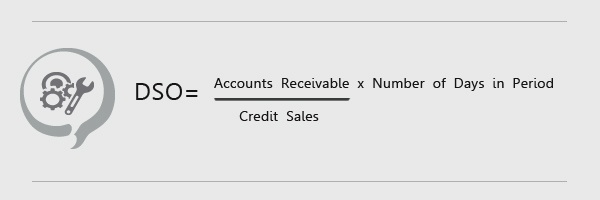
KPI #7: Days Payable Outstanding (DPO)
Definition: This tells a retailer how long it takes them, on average, to pay off their bills and invoices.
Why you should track it: This is a vital retail KPI to monitor, as it can help a retailer balance the amount of time it takes to pay bills. Taking a longer time may allow the company to retain and use its funds more efficiently, whereas taking too long could lead to poor credit history.
Formula: DPO = Accounts Payable x Number of Days / COGS

KPI #8: Cash Conversion Cycle (CCC)
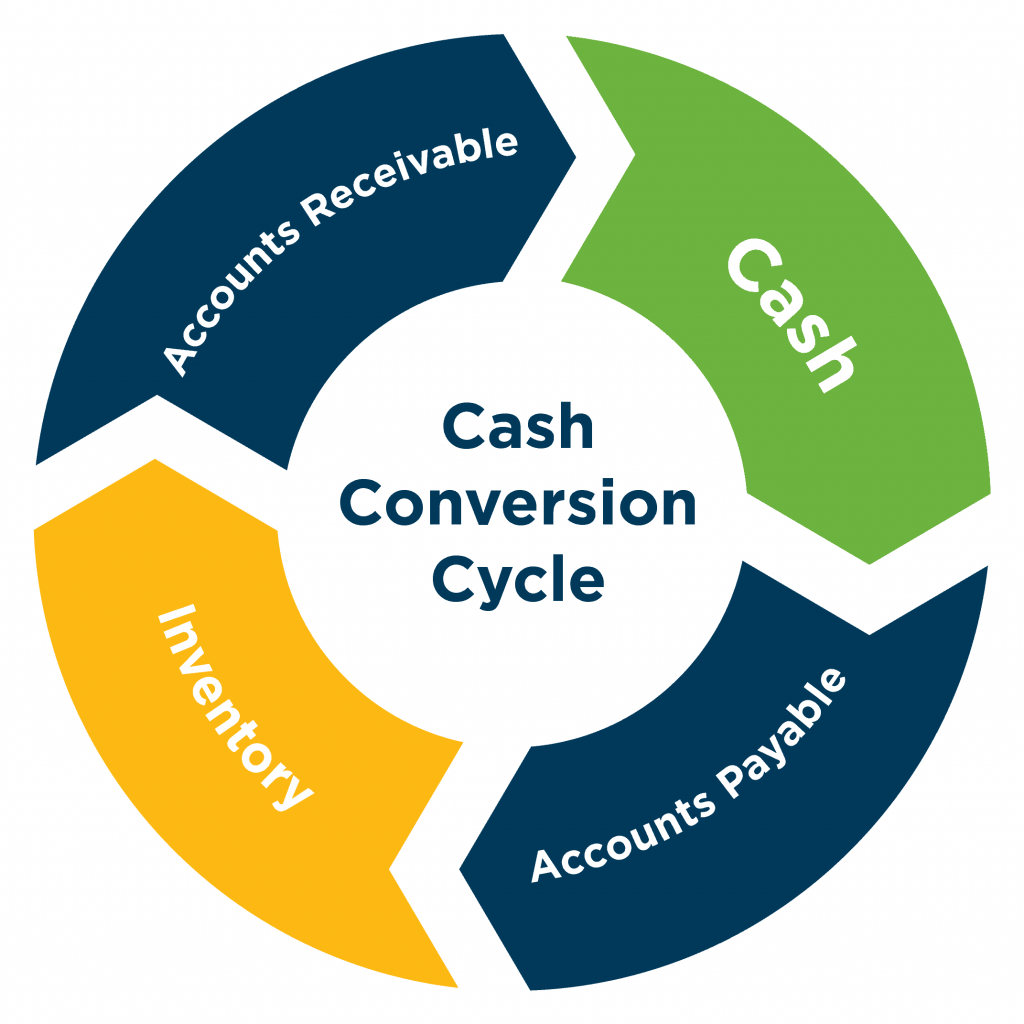
Definition: The cash conversion cycle demonstrates a retailer’s ability to turn their investment in inventory into cash.
Why you should track it: This metric allows retailers to ensure that they are efficiently using their resources to create a profit.
Formula: Cash Conversion Cycle = DIO + DSO – DPO
KPI #9: Net Profit Margin
Definition: Net profit margin is probably one of the most crucial retail KPI to monitor. It measures what percentage of profit retailers make from their total revenue.
Why you should track it: A healthy net profit margin shows investors that a retailer is collecting enough profit from their sales.
Formula: Net Profit Margin = Net Profit / Total Revenue x 100

How to improve KPI performance in retail
- Prioritize and focus on the most impactful retail KPIs to monitor based on your business/marketing goals.
- Delegate the duties and create small groups to manage and run at least one optimization experiment per week, per KPI type.
- Avoid frequent meetings to stay productive. Instead, host one weekly catch-up call (i.e., 15-30 mins every Monday) and one in-depth monthly reporting session.
- Use automated reporting tools to more efficiently track retail KPIs to monitor.
- Implement innovative efforts toward retail strategies that differentiate you from a competitor (e.g. Investing in an AI-powered video editor and adding videos to the retail experience to better assist consumers).
Tools for KPIs reporting
- Google Analytics 360: GA 360 offers retailers information on consumer behavior from the moment they land on a retailers website to the moment they leave, including CTR, impressions, and conversions.
- ContactPigeon: ContactPigeon provides insight to all web behaviors, eCommerce activities, and marketing performances, including the KPI metrics mentioned in this article.
- ERP reports: Popular ERPs include Netsuite, Hubspot, and SAP.
- Google Data Studio: This is an automated data collecting tool that analyzes data from all platforms and offers insight into where improvements can be made. It is a great way to save time collecting and analyzing data.
Focus on the Retail KPIs that serve your business strategy and vision
As a retailer, it is important to recognize that your goals, needs, and culture are different from other retailers. It is essential to focus on retail KPIs to monitor that best fit the needs of your business.
All KPIs serve a different purpose, which is why it is vital to define your company’s primary goals before locking in on the KPIs that you want to monitor. When it comes to KPIs, testing more metrics that pertain to your goal will allow you to understand the impact of each retail KPI to monitor, thus maximizing your chance for higher growth rates. Understanding retail KPIs to monitor and learning how to leverage those metrics is essential for reaching and even surpassing your company goals.

Let’s Help You Scale Up
Spending time on Linkedin? Follow us and get notified of our thought-leadership content:


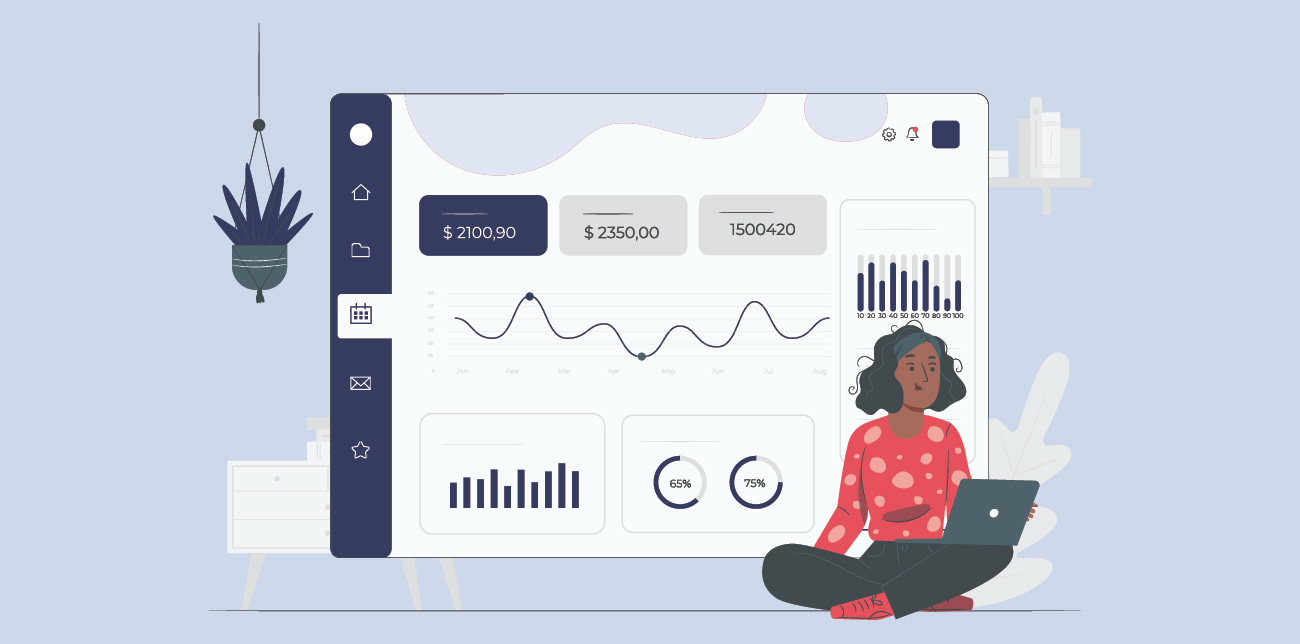

![Benchmarking Growth Strategies of Top Fashion Retailers [Study]](https://blog.contactpigeon.com/wp-content/uploads/2025/11/top-fashion-retailers.jpg)